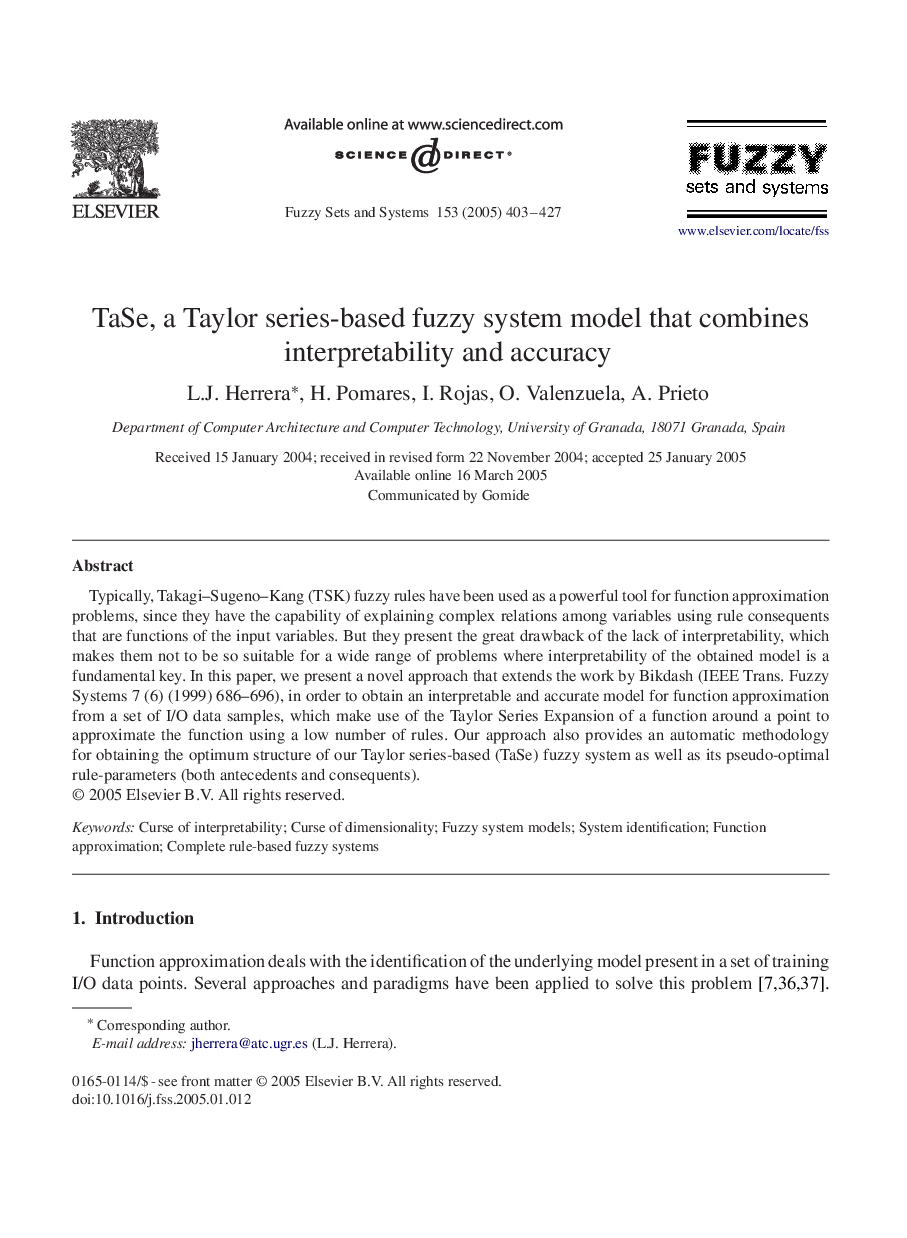| Article ID | Journal | Published Year | Pages | File Type |
|---|---|---|---|---|
| 10323968 | Fuzzy Sets and Systems | 2005 | 25 Pages |
Abstract
Typically, Takagi-Sugeno-Kang (TSK) fuzzy rules have been used as a powerful tool for function approximation problems, since they have the capability of explaining complex relations among variables using rule consequents that are functions of the input variables. But they present the great drawback of the lack of interpretability, which makes them not to be so suitable for a wide range of problems where interpretability of the obtained model is a fundamental key. In this paper, we present a novel approach that extends the work by Bikdash (IEEE Trans. Fuzzy Systems 7 (6) (1999) 686-696), in order to obtain an interpretable and accurate model for function approximation from a set of I/O data samples, which make use of the Taylor Series Expansion of a function around a point to approximate the function using a low number of rules. Our approach also provides an automatic methodology for obtaining the optimum structure of our Taylor series-based (TaSe) fuzzy system as well as its pseudo-optimal rule-parameters (both antecedents and consequents).
Related Topics
Physical Sciences and Engineering
Computer Science
Artificial Intelligence
Authors
L.J. Herrera, H. Pomares, I. Rojas, O. Valenzuela, A. Prieto,
